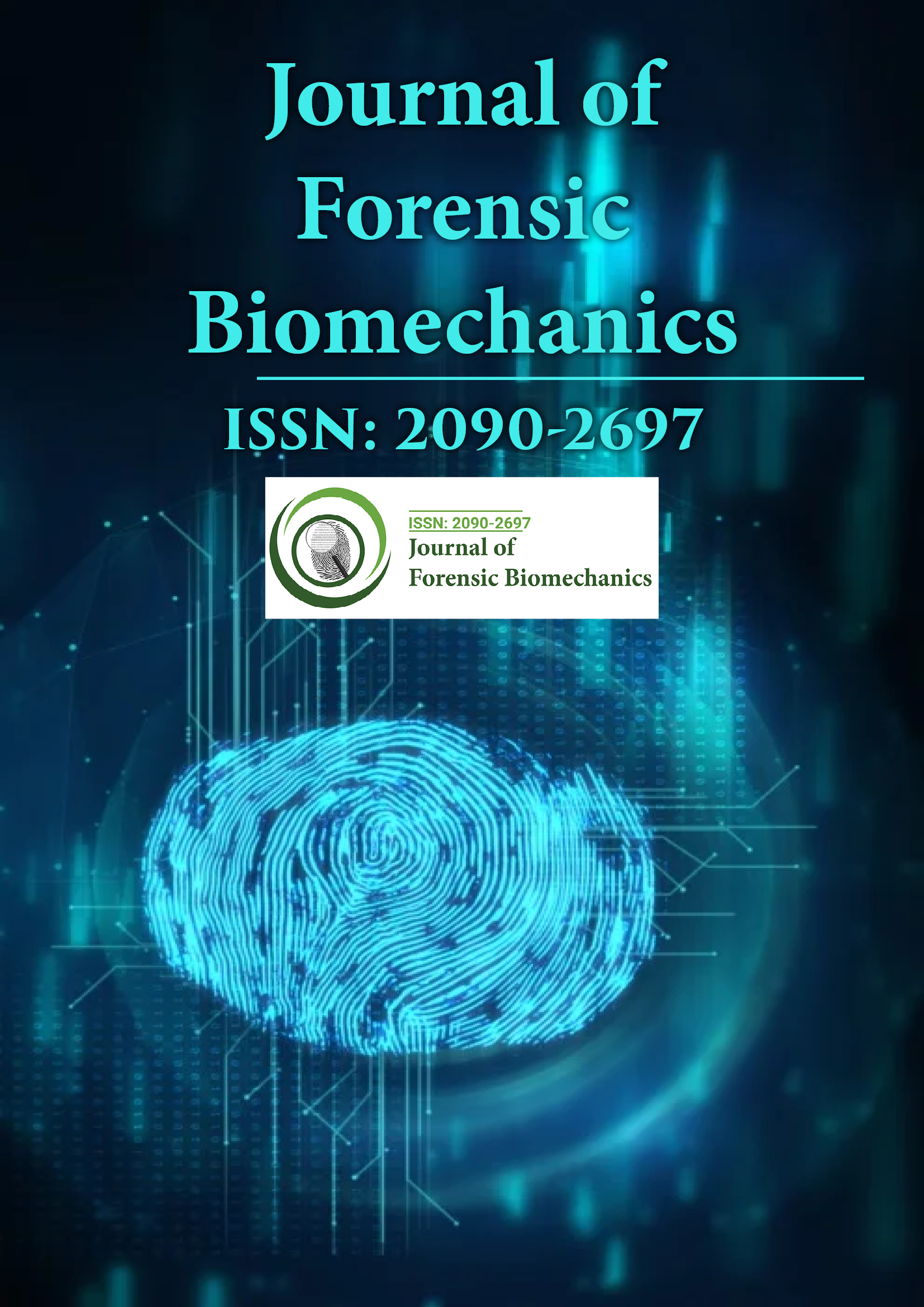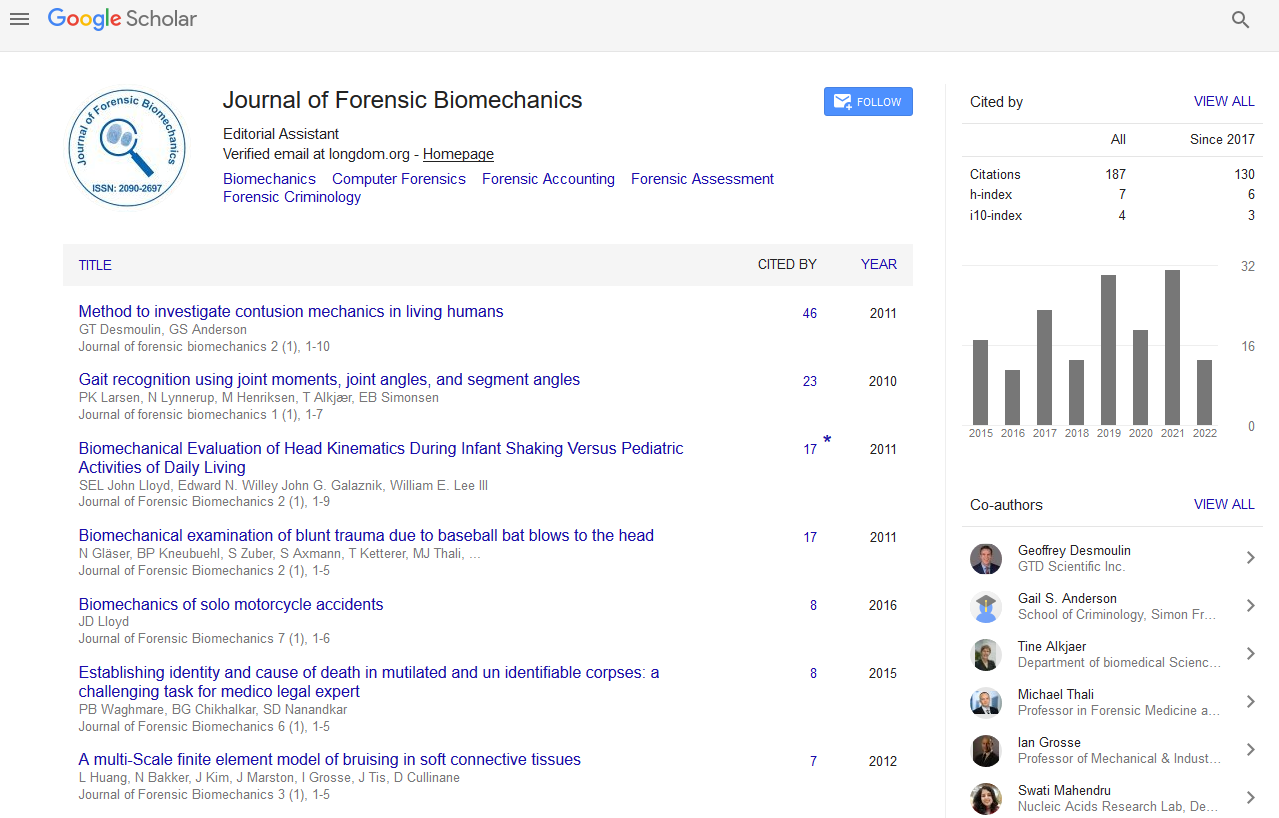Indexed In
- Genamics JournalSeek
- SafetyLit
- Ulrich's Periodicals Directory
- RefSeek
- Hamdard University
- EBSCO A-Z
- Geneva Foundation for Medical Education and Research
- Euro Pub
- Google Scholar
Useful Links
Share This Page
Journal Flyer

Open Access Journals
- Agri and Aquaculture
- Biochemistry
- Bioinformatics & Systems Biology
- Business & Management
- Chemistry
- Clinical Sciences
- Engineering
- Food & Nutrition
- General Science
- Genetics & Molecular Biology
- Immunology & Microbiology
- Medical Sciences
- Neuroscience & Psychology
- Nursing & Health Care
- Pharmaceutical Sciences
Commentary - (2023) Volume 14, Issue 2
Investigating Digital Devices: The Role of Computer Forensics
Wasim Ahmad*Received: 02-Mar-2023, Manuscript No. JFB-23-20627; Editor assigned: 06-Mar-2023, Pre QC No. JFB-23-20627 (PQ); Reviewed: 20-Mar-2023, QC No. JFB-23-20627; Revised: 27-Mar-2023, Manuscript No. JFB-23-20627 (R); Published: 03-Apr-2023, DOI: 10.35248/2090-2697.23.14.434
Description
Computer forensics, also known as digital forensics, is a branch of forensic science that deals with the investigation and analysis of digital devices and data in order to gather evidence that can be used in legal proceedings. The field of computer forensics has grown in importance in recent years as more and more crimes are committed using digital technology, and the need for reliable evidence to be presented in court has increased. Computer forensics involves the use of specialized software tools and techniques to retrieve data that has been deleted or hidden, analyze it for clues, and present it in a format that is admissible in court. This can involve analyzing computer hard drives, mobile phones, and other digital devices, as well as analyzing network traffic and other types of digital data. One of the primary goals of computer forensics is to establish a chain of custody for digital evidence, to ensure that it is not tampered with or altered in any way. This involves documenting every step of the process, from the initial collection of the evidence to its analysis and presentation in court. This chain of custody is critical in ensuring the integrity of the evidence, and can be used to challenge the credibility of the evidence if it is not properly documented.
Another important aspect of computer forensics is data recovery. When data is deleted from a computer or other digital device, it is not actually erased from the device's storage media. Instead, the space occupied by the data is marked as available for use, and new data can be written over it. Computer forensics specialists can use specialized software tools to recover deleted data, even if it has been overwritten by new data. This can be a valuable source of evidence in cases where the suspect has attempted to cover their tracks by deleting incriminating data. One of the challenges of computer forensics is the sheer volume of data that can be collected from a digital device. Even a relatively small hard drive can contain millions of files, and analyzing all of this data can be a daunting task. Computer forensics specialists use a variety of techniques to filter and prioritize the data, such as searching for specific keywords or file types that are relevant to the case. In addition to analyzing digital devices, computer forensics can also involve analyzing network traffic to identify patterns of behaviour or communication that may be relevant to the case. This can involve monitoring network traffic in real-time or analyzing logs and other data that has been captured from network devices. One of the challenges of computer forensics is the rapidly changing nature of technology.
New types of digital devices and data storage media are being introduced all the time, and computer forensics specialists must stay up-to-date with the latest techniques and tools in order to be effective. In addition, the legal landscape around digital evidence is constantly evolving, and computer forensics specialists must be familiar with the latest case law and legal standards in order to ensure that their evidence is admissible in court. Despite these challenges, computer forensics is a valuable tool in the fight against digital crime. By analyzing digital devices and data, computer forensics specialists can provide valuable evidence that can be used to prosecute criminals and bring them to justice. As technology continues to evolve, computer forensics will become even more important in the years to come.
Citation: Ahmad W (2023) Investigating Digital Devices: The Role of Computer Forensics. J Forensic Biomech. 14:434.
Copyright: © 2023 Ahmad W. This is an open-access article distributed under the terms of the Creative Commons Attribution License, which permits unrestricted use, distribution, and reproduction in any medium, provided the original author and source are credited.

